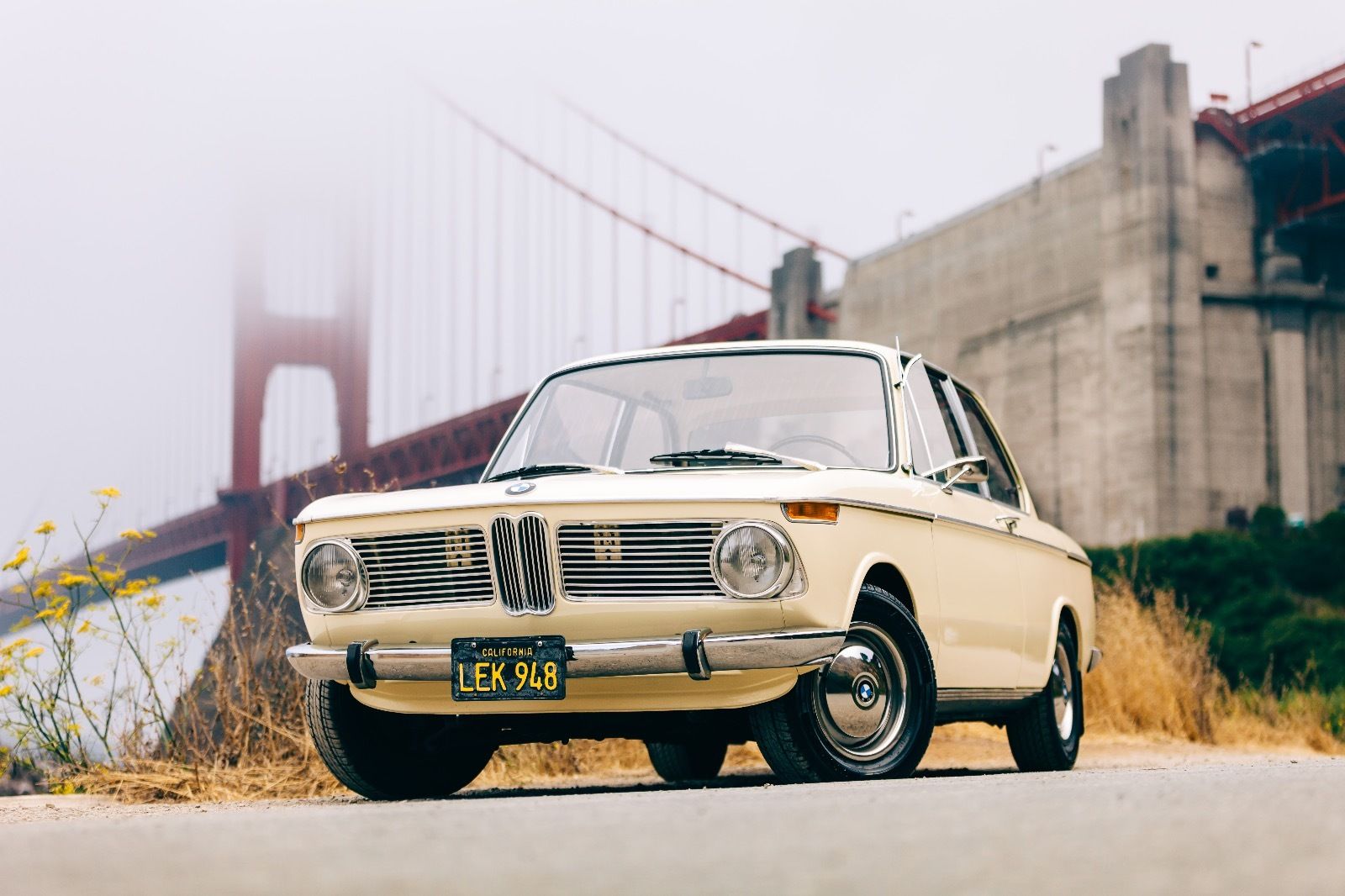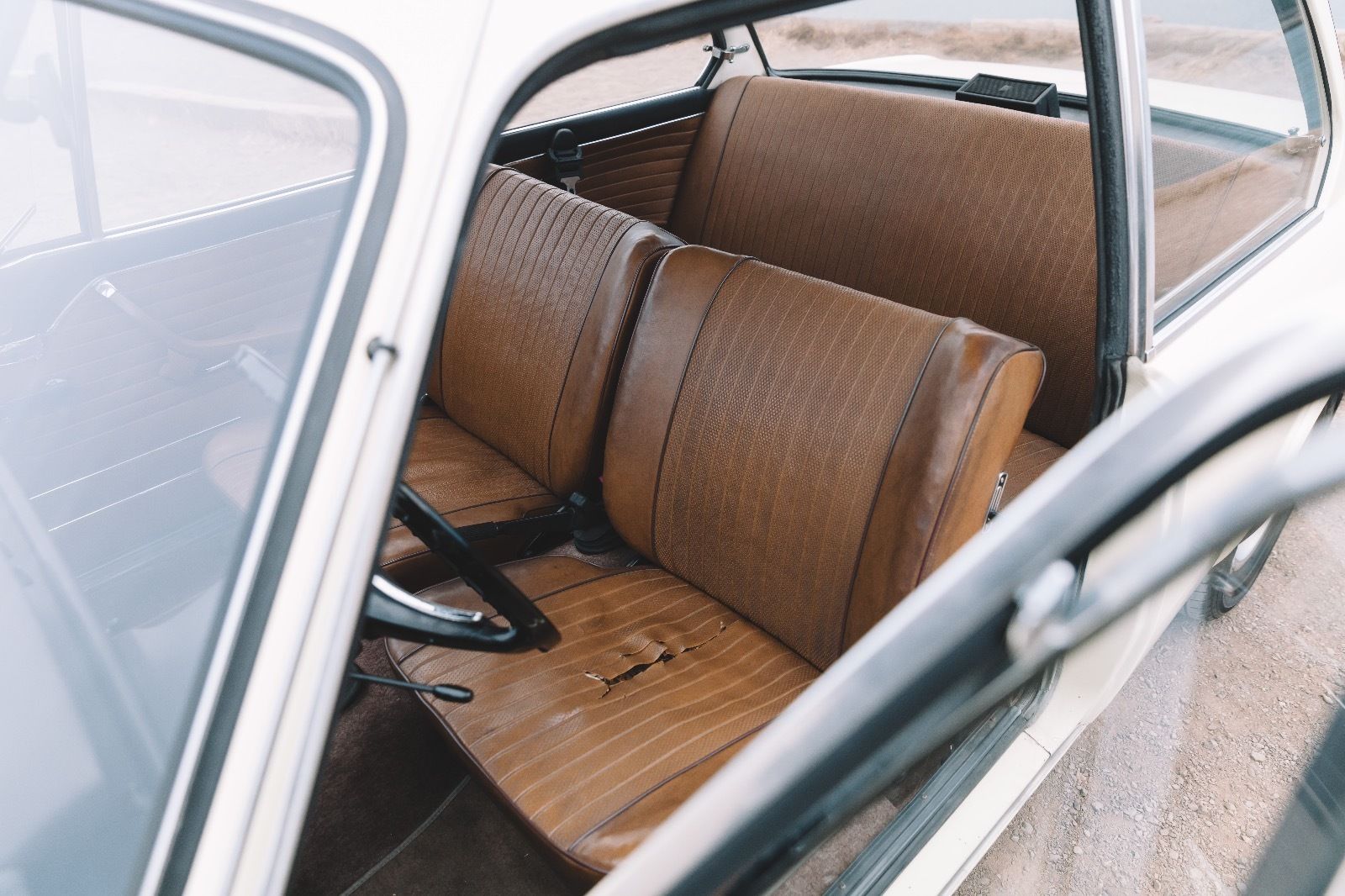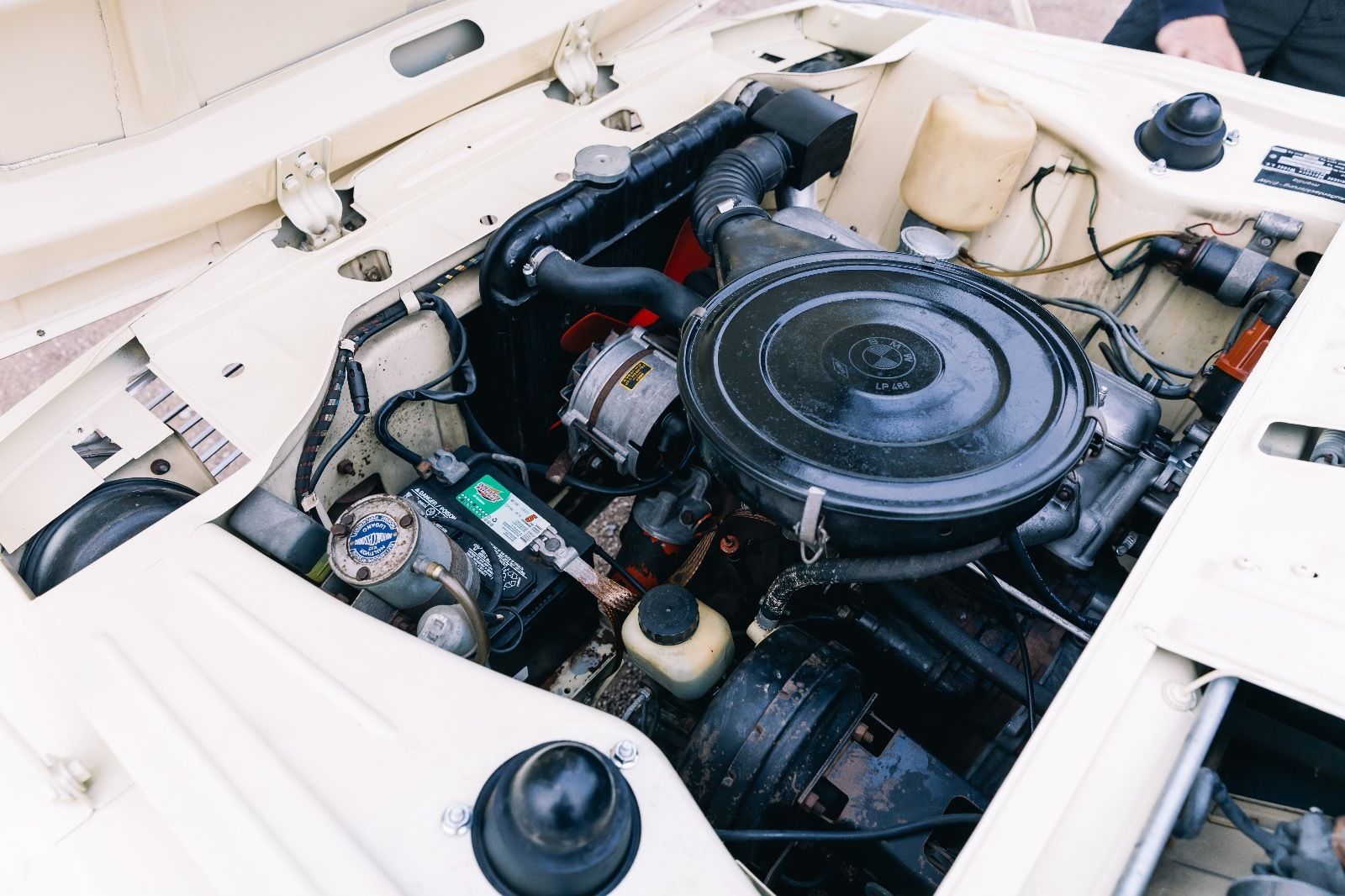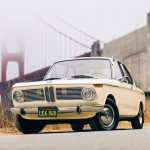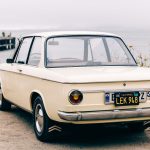BMW’s long road to recovery in the postwar era was interesting to say the least. Before the war, BMW had a moderately successful series of luxury and sports cars with its 326, 327 and 328 lineup. However, the market for those cars in Germany didn’t exist in the early 1950s and the technology was quite dated, so BMW found itself reliant upon an Italian-designed and licensed bubble car — the Isetta — to sustain early sales. Of course, with their motorcycle expertise, the air-cooled twins that found their way into Isettas were reliable (though not sprightly) units.
Though economical, a family sedan the Isetta did not make, so starting in 1957 BMW stretched the two seats into four and created the 600. With just shy of 600cc from an enlarged rear-mounted engine borrowed from a R67 motorcycle and a four-speed manual gearbox driving a new semi-independent trailing arm rear end, the 600 was a serious step forward for the company. The improvements were masked behind a familiar face (which still served as the primary door, as with the Isetta) and the 600 was not a sales success, with just shy of 35,000 produced. Intended to compete with the Beetle, it offered little respite from Volkswagen’s steamrolling sales success.
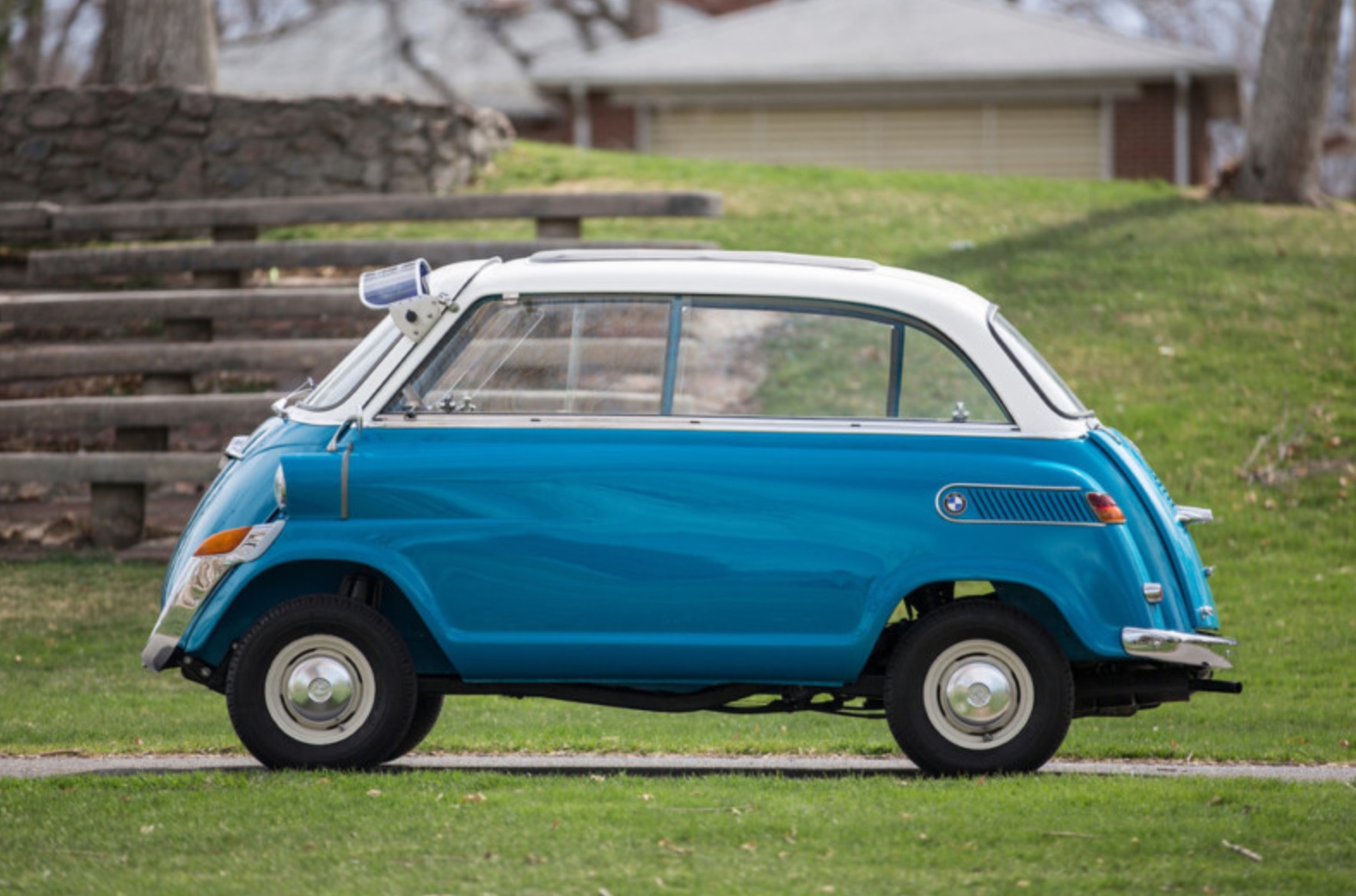
To remedy this, BMW continued to develop the 600 chassis into the larger and more conventional 700 model. Launched in 1959 as BMW skirted attempts by Daimler-Benz to purchase the Munich-based firm, the 700 heralded BMW’s first true postwar sedan. Yet in spite of the conventional sedan proportions, the 700 retained the motorcycle-based air-cooled flat-twin in the back, driving the rear wheels. Back when BMW’s naming conventions matched their engine sizes, the eponymous sedan’s power was upgraded to nearly 700cc and 30 horsepower — 50 percent more than the 600. Styling came from Italian Giovanni Michelotti, who would go on to pen the next generation of BMW sedans.

The 700 was available in three configurations — the conventional sedan, a sporty-rooflined coupe, and a convertible, each sporting era-correct tail fins. True to the company’s history, BMW even raced the 700 in rally, circuit and hill-climb events. The 700 would go on to be a relative sales boom for the company, bridging the gap between the borrowed Isetta models and the company’s first postwar conventional sedan: the water-cooled, front-engine Neue Klasse you probably remember best in the form of the legendary 2002.
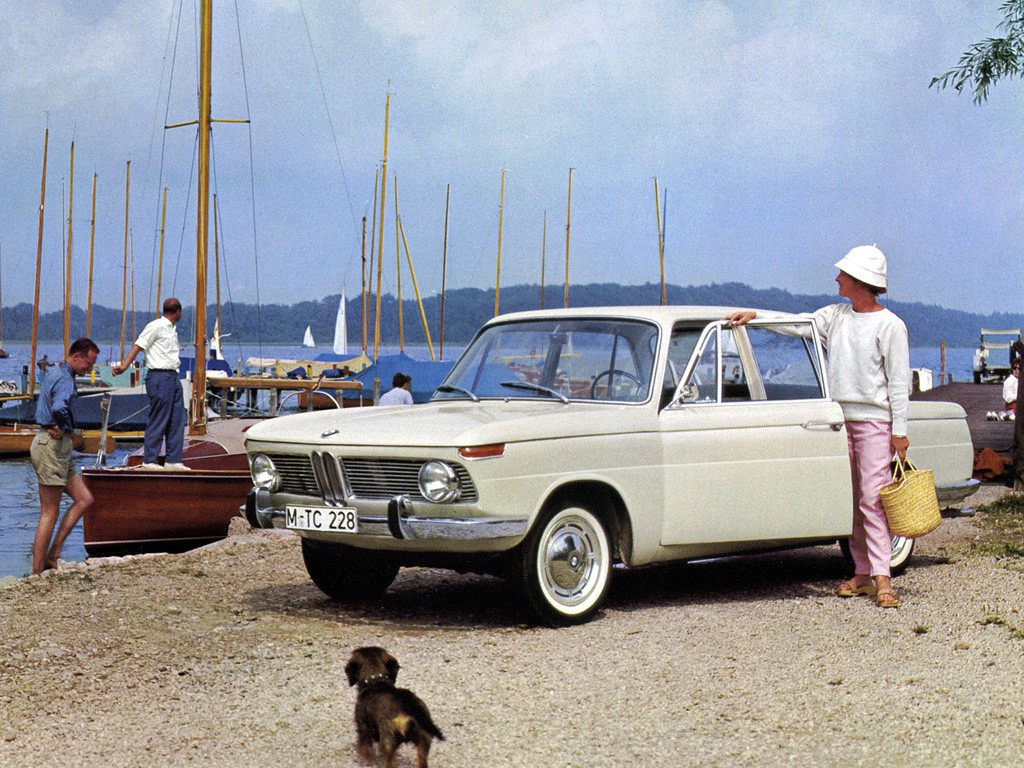
The Neue Klasse launched with quite a splash in 1961 at the Internationale Automobil-Ausstellung in Frankfurt, and signaled a new direction for the company. Badged the 1500 due to its 1499cc M10 water-cooled inline-4, the 1500 was later joined by larger displacement models, some with fuel injection; the 1800 in 1963 and the 2000 in 1966. In 1964, the 1500 was replaced by the enlarged 1600. The M10 was punched out to 1573cc and now produced 4 more horsepower for a total of 84. While the 1600 wasn’t the first Neue Klasse, it was the first commercially successful model; between the beginning of 1966 and the end of 1968, BMW produced nearly 70,000 units of this model alone. This particular 1600 is a 1600-2 (the 1602 badge didn’t appear until 1973) from late in the ’68 VIN run, one of the 17,702 produced in this batch:
CLICK FOR DETAILS: 1968 BMW 1600 on eBay
Year: 1968
Model: 1600
Engine: 1.6 liter inline-4
Transmission: 4-speed manual
Mileage: 93,000 km (58,500 mi)
Price: Reserve Auction
This 1968 BMW 1600 is a European model that was sold new in Lugano, Switzerland and imported to California in 2007. The 1600 was manufactured on September 17th, 1968 and delivered to Switzerland on September 25th, 1968 (the original registration is shown in the gallery and included with the sale).
The vehicle received a repaint performed in the correct Manila (004) in early 2017. The interior retains the original Golden Brown vinyl with Chocolate Brown carpet, and front seat belts have been added. The 1600cc M10 inline-four cylinder was rebuilt prior to the vehicles importation to the United States and is paired to a 4-speed manual transmission. Many of the mechanical systems have been refurbished as described below, and the most recent work included a valve adjustment and rebuilding the Solex carburetor. This BMW 1600 is being sold with service records, owner’s manual, a clear California title, and any original parts removed from the vehicle during the restoration, and many spare parts.
After acquiring the car, I had the body stripped, the panels straightened, and rust repaired. A repaint was then performed in the correct Manila (004). All original trim was reused, and new seals were fitted when reinstalling the glass and bumpers. New Euro hubcaps, WEGU mud flaps, swan neck side mirror, and the chrome rear Euro license plate holder were also added.
Work done by the previous owner included replacing all lamps and bulbs and rebuilding the brake system. New parts installed by the previous owner included new shocks and struts, control arms and ball joints, driveline flex disc, and new tires, plus many maintenance items all detailed in the service records stretching back over a decade. The original importing family registered the black California plates to the vehicle to give it the correct and period look.
Inside, the Golden Brown vinyl with Chocolate carpets and black trim are all original, with a few tears present on the base of the driver’s seat. The dash and horn pad both have small cracks, and the clock does not keep accurate time. Front seat belts have been added during the time of importation, and the central speaker fitted on the rear shelf an original and uncommon option. The five-digit odometer shows 95k kilometers (~58.5k miles) and has rolled over once according to service records and the owners manual. A previously installed switch in Switzerland hidden under the dash toggles between the OEM horn and Italian air horns fitted as an option in the 1960’s.
Based on the hand-written notes in the owner’s manual, the original M10 engine was rebuilt about 50k miles ago with new pistons, rods, rings, bearings, and intake and exhaust valves. A new first gear synchro was also added to the 4-speed transmission. Work done in 2017 included rebuilding the Solex carburetor, a valve adjustment, and a new valve cover gasket. Previous work included new cooling system components and fluid, a new distributor (original comes with the car), and a new fuel pump.
The clutch pedal was recently adjusted along with many other maintenance items complete last month. While the 1600 was at the mechanic I had a pre-purchase inspection completed that indicates that the clutch disc has approximately 15% remaining and the driver side half-shaft has a torn boot. The passenger side half-shaft was previously replaced with an original “2002” part (this is what I would recommend for the driver side down the road (although both original 1600 half shots will come with the car and both can be serviced and left on the car). Additional undercarriage photos are shown in the gallery.
Service records show $17k spent over the last decade by the previous owner and myself.
Many more photos and videos of the car are available upon request or for view immediately on my Instagram @oh2ryan
The vehicle is listed for sale in Sunnyvale, CA and I can arrange any test drives or mechanic checks at your local shop, just shoot me a message or reach me at 530 three zero six 1066
Photos courtesy of Sannie Celeridad
On Aug-31-17 at 08:43:14 PDT, seller added the following information:
Edit (Aug 31) – A repaint was then performed in the correct Manila (004) over the outside of the body, under the hood, and the tops of the fenders in the engine compartment, the trunk and engine bay were left in original paint as they were in excellent shape. All original trim and many original seals were reused, with new seals being fitted when reinstalling the front and rear windshield glass and bumpers.
Inside, the Golden Brown vinyl with Chocolate brown carpets are all original, with a few tears present on the base of the driver’s seat. The dash and horn pad both have small cracks, and the clock does not keep accurate time. The chrome trim on the dash has been replaced with new BMW pieces ($$$), but the mylar wrapped door card trim is starting to peel in certain areas.
The car’s instrument cluster, speedometer and all records are in metric (kilometers). Any listings of mies or mileage in this ad have been converted over. The car currently reads 93,xxx kilometers.
There’s a simplicity in the early E10s that was lost along the way; while the late 2002s are still neat looking, they just aren’t as delicate as the early ones. This ’68 is just plain lovely, and it appears to have been stewarded well by the prior owners. Presentation is generally outstanding with just the right amount of patina and a period-correct look that will have the baristas in San Fran over-pressing their espresso grinds. Value should remain more attainable than the recent $93,000 2002tii; the 1600s aren’t as highly valued as the bigger-motored cars outside of the very limited fuel-injection model. That car had 105 horsepower and they only built 8,670 of them; consequently, values are much higher. The value of this car will vary greatly by how much someone wants it; a similar (but not original) 1600-2 sold on Bring a Trailer in 2015 for $14,750, or you can have this near perfect restored example for $37,000. This car’s value today is between those two examples, but much closer to the BaT example. Though bidding has passed $15,100, it seems unlikely that the reserve will be met this time around.
-Carter

